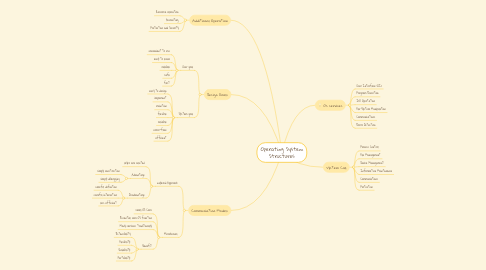Operating System Structures
by Tan Yik Jing


1. OS services
1.1. User Interface (UI)
1.2. Program Execution
1.3. I/O Opertation
1.4. File-System Manipulation
1.5. Communications
1.6. Error Detection
2. System Call
2.1. Process Control
2.2. File Management
2.3. Device Management
2.4. Information Maintenance
2.5. Communiations
2.6. Protection
3. Communiation Models
3.1. Layered Approach
3.1.1. layer are seleted
3.1.2. Advantage
3.1.2.1. simply construction
3.1.2.2. simply debugging
3.1.3. Disadvantage
3.1.3.1. careful definition
3.1.3.2. careful interaction
3.1.3.3. less efficient
3.2. Microkernel
3.2.1. small OS Core
3.2.2. Essential core OS function
3.2.3. Many services traditionally
3.2.4. Benefit
3.2.4.1. Extensibility
3.2.4.2. Flexibility
3.2.4.3. Reliability
3.2.4.4. Portability
4. Design Goals
4.1. User goal
4.1.1. convenient to use
4.1.2. easy to learn
4.1.3. reliable
4.1.4. safe
4.1.5. fast
4.2. System goal
4.2.1. easy to design
4.2.2. implement
4.2.3. maintain
4.2.4. flexible
4.2.5. reliable
4.2.6. error-free
4.2.7. efficient
